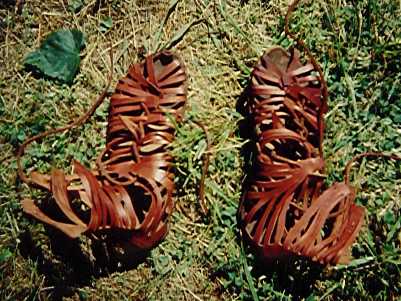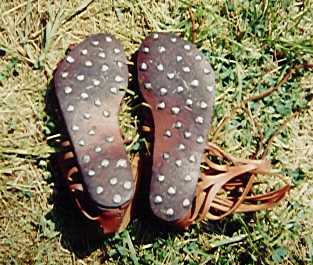Caligae
These heavy sandals are the classic Roman army boot. Numerous examples have been found at first-century sites.
Patterns and materials are available, and construction involves a lot of careful cutting but is otherwise straightforward. The upper is cut from a single piece of 2 to 6-ounce leather, well-oiled or waxed to prevent decay. The sole is 1/2" to 3/4" thick and is made of several thick layers, with the upper sandwiched between the top two. The layers are held together with hobnails; lay them on an anvil or flat piece of steel, and drive the nails into the sole so that the points go through the innermost layer and bend over as they hit the steel. Cover the clenched points with an insole of thin leather, securing it in place with a few stitches. Complete the shoe by sewing up the heel seam with a butted or overlapped seam.
The domed iron hobnails should be about 1/4" to 1/2" in diameter. The heads need not be perfect hemispheres; irregular, flatter, or more conical shapes are acceptable. World War I or II-style hobnails will work, or "Antique Nails" from some hardware stores. Upholstery tacks are not durable enough.Before cutting good leather, make a working mock-up out of heavy cloth. Do not make the soles too wide; trace your foot and cut the soles narrower by 1/4" on each side. Make the tabs extra long and the slits shorter than necessary, and adjust them later.

